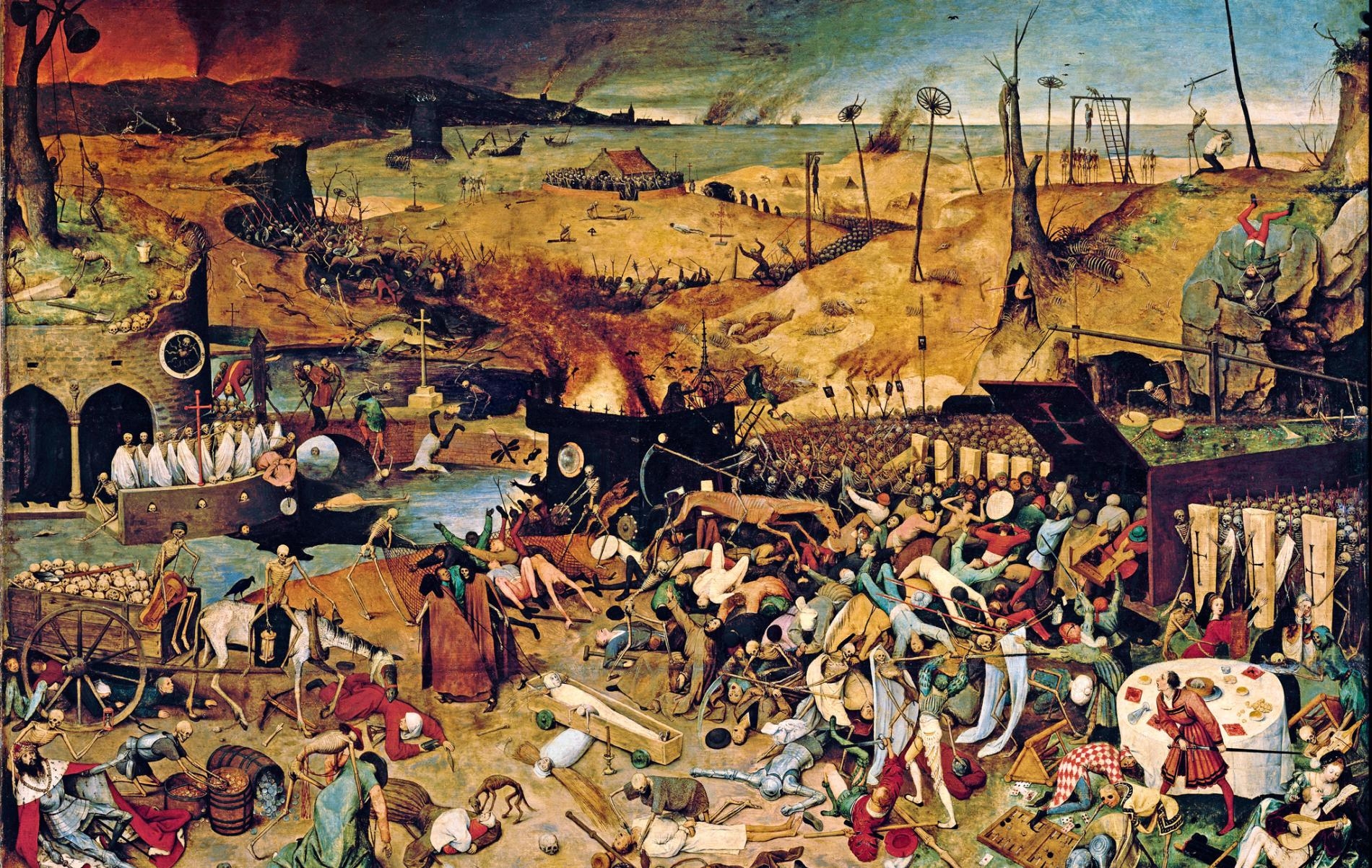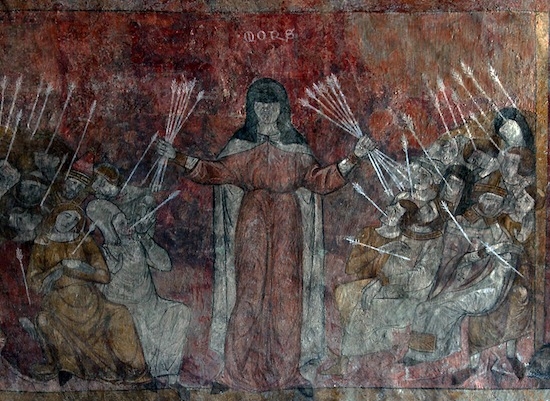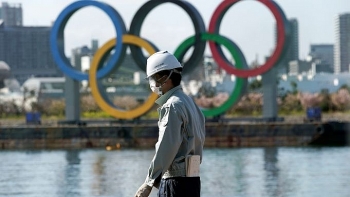Black Death - World's Deadliest Pandemic in Human History
 |
| Photo: Nationalgeographic.com |
What is the world's first pandemic?
The Black Death was probably the earliest recorded pandemic. It took around four years to make its way along the Silk Road from the Steppes of Central Asia, via Crimea, to the Western most parts of Europe, the Middle East and North Africa. In Europe alone it wiped out an estimated one to two thirds of the population. Many communities encountered the disease for the first time and had no idea how to respond.
It’s possible that outbreaks of other diseases such as smallpox and leprosy were also attributed to plague at the time. But the pattern of symptoms described were largely consistent with one disease, and the collective experience was of that disease. The medical authorities of the day had little to offer. 'Leave quickly, go far and come back slowly' was the general advice about what to do if an epidemic came to your town, Sciencemuseum reported.
Facts about Black Death
1. The Black Death Killed 25% to 60% of Europe’s Population
 |
| Photo: Quora.com |
The Black Death is the name used to describe the plague epidemic that swept through Europe from 1348 to 1351. One of the most frightening Black Death facts is that it was extremely fatal and spread very quickly.
Although the exact death toll can only be estimated based on what we know now, it is thought between 75 and 200 million people died. It is estimated that 25% to 60% of the European population were wiped out during the epidemic. Some estimations are even set as high as two-thirds of the population.
2. The Population at the Time was Prone to Disease Spread
The Black Death was terrifying because of the shocking pace at which it spread. It was not a coincidence that the epidemic swept through Europe as fast as it did. The population at the time very prone to contagious diseases.
The Black Death occurred after a period of rapid population growth in Europe. At that time, there had been two years of harsh winters with torrential rains. The food source was limited, while the population was still growing fast.
This led to a food shortage that drove people and animals from rural areas and into the cities. Crowded living conditions, coupled with a lack of hygiene, allowed diseases to spread extremely quickly, according to Facts.net.
3. Black Death's originator
Breaking out in ‘the east’, as medieval people put it, the Black Death came north and west after striking the eastern Mediterranean and Italy, Spain and France.
It then came to Britain, where it struck Dorset and Hampshire along the south coast of England simultaneously. The plague then spread north and east, then on to Scandinavia and Russia, Historyextra expressed.
4. The Black Death was Believed to Be Caused By ‘Pockets of Bad Air’
It wasn’t until the 1890s that the Y. pestis virus was discovered. When the plague quickly spread across Europe, there were many strange theories regarding what caused the plague. A popular opinion was that the Black Death was caused by pockets of bad air, which were released from earthquakes.
Some people also believed that the alignment of Saturn, Jupiter and Mars was unfavourable on March 20, 1345, causing the ‘bad air’. Religious groups argued that the epidemic was a punishment from God for the sins of the people.
5. Patients Were Often Discouraged from Bathing during the Plague
 |
| Photo: Impressions.com |
At the time of the plague, people were discouraged from bathing and changing their clothes in order to avoid engaging in the sin of vanity. The act of bathing was believed to anger God and would bring punishment upon them. Perfumes were often used to cover up body odours.
For people who contracted the plague, it is said that bathing also opened up their pores and let in more bad air, which was believed to make the disease worse. Hence, bathing was also discouraged for plague patients.
6. The Black Death Set the Foundation for the Renaissance
There are many Black Death facts concerning the consequences that it left behind. However, you would be surprised to know that the Black Death may have prompted the birth of the Renaissance.
With a drastic decrease in population and endless depression and fear everywhere, many strict rules were no longer enforced. The need to find a cure for the plague also prompted people to engage in research and studies using scientific methods.
Many experts believed that this helped change people’s thinking and started the momentum toward innovation and scientific research, leading to the Renaissance.
 |
| Photo: KhanAcademy.com |
7. The Plague Still Exists in the Modern World
| When talking about black plague facts, many people may assume that the disease is a thing of the past. The plague still exists in the world today, however. Fortunately, the chance of having another worldwide plague epidemic is rather slim – thanks to the development of antibiotics – although a pandemic can still arise in developing countries, where access to medicine is still lacking. The most recent plague outbreak was in 1994 in India. |
Good news: It can be cured!
Unlike Europe’s disastrous bubonic plague epidemic, the plague is now curable in most cases. It can successfully be treated with antibiotics, and according to the CDC, treatment has lowered mortality rates to approximately 11 percent.
The antibiotics work best if given within 24 hours of the first symptoms. In severe cases, patients can be given oxygen, intravenous fluids, and breathing support. “It is critically important to be treated early as a delay in receiving antibiotics increases the risk of dying,” Kappagoda said.
Preventive antibiotics are also given to people who don’t yet have the plague, but have come into contact with an animal or person who does, Healthline said.
If you find the abovementioned information effective, don't hesitate to share it to your friends, many thanks in advance!
 How COVID-19 Pandemic Has Slowed Sport Events all around the World How COVID-19 Pandemic Has Slowed Sport Events all around the World Not surprisingly, COVID-19 has also upended the sporting calendar, with professional leagues everywhere suspending their activities to limit the spread of the virus. And this ... |
 Top 30 Fengshui Baby Names During the Covid-19 Pandemic Top 30 Fengshui Baby Names During the Covid-19 Pandemic A good name can bring positive influences and soaring success to an individual, hence the importance of selecting a good name. This is especially important ... |
 How to Celebrate 2021 New Year Virtually: 7 Brilliant Ideas During Covid-19 Pandemic How to Celebrate 2021 New Year Virtually: 7 Brilliant Ideas During Covid-19 Pandemic It’s hard to imagine New Year’s Eve without glitter confetti falling over a packed, champagne-soaked party, but like the rest of 2020, this December 31 ... |
 EVIDENCES About Mouthwash Dentyl and Listerine can kill Covid-19? EVIDENCES About Mouthwash Dentyl and Listerine can kill Covid-19? Dentyl and Listerine Mouthwash is able to kill COVID-19 within 30 seconds of exposure to it in a laboratory, a scientific study has found. Evidences ... |
 What are Hidden Long-term Effects of COVID-19? What are Hidden Long-term Effects of COVID-19? While most persons with COVID-19 recover and return to normal health, some patients can have symptoms that can last for weeks or even months after ... |
 How to Treat Covid-19 (Coronavirus) by Natural Remedies How to Treat Covid-19 (Coronavirus) by Natural Remedies The coronavirus (COVID-19) sounds dangerous, and for some people, especially those with underlying conditions. But most people will likely have a mild coronavirus case and ... |
























